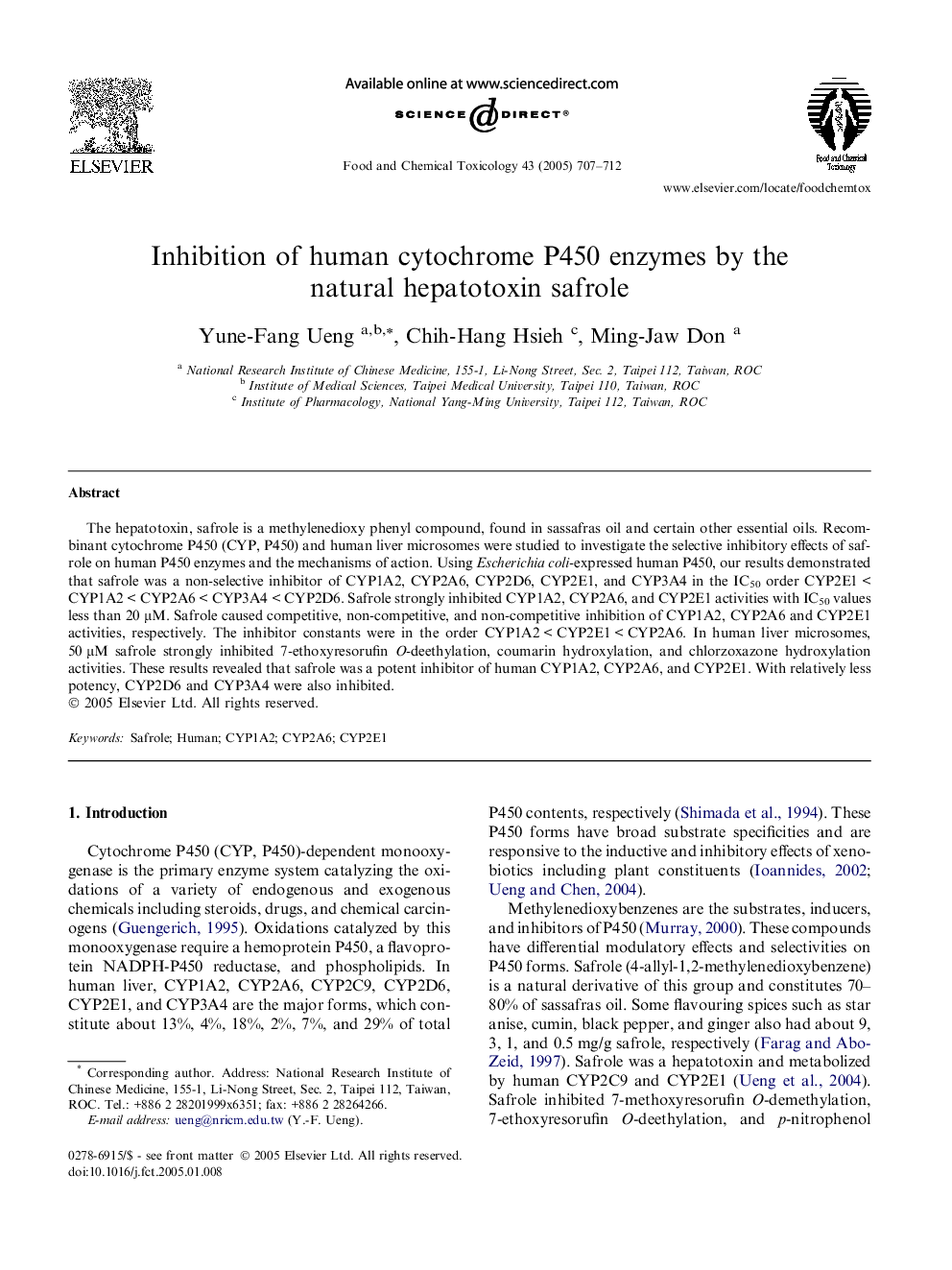| Article ID | Journal | Published Year | Pages | File Type |
|---|---|---|---|---|
| 9030647 | Food and Chemical Toxicology | 2005 | 6 Pages |
Abstract
The hepatotoxin, safrole is a methylenedioxy phenyl compound, found in sassafras oil and certain other essential oils. Recombinant cytochrome P450 (CYP, P450) and human liver microsomes were studied to investigate the selective inhibitory effects of safrole on human P450 enzymes and the mechanisms of action. Using Escherichia coli-expressed human P450, our results demonstrated that safrole was a non-selective inhibitor of CYP1A2, CYP2A6, CYP2D6, CYP2E1, and CYP3A4 in the IC50 order CYP2E1 < CYP1A2 < CYP2A6 < CYP3A4 < CYP2D6. Safrole strongly inhibited CYP1A2, CYP2A6, and CYP2E1 activities with IC50 values less than 20 μM. Safrole caused competitive, non-competitive, and non-competitive inhibition of CYP1A2, CYP2A6 and CYP2E1 activities, respectively. The inhibitor constants were in the order CYP1A2 < CYP2E1 < CYP2A6. In human liver microsomes, 50 μM safrole strongly inhibited 7-ethoxyresorufin O-deethylation, coumarin hydroxylation, and chlorzoxazone hydroxylation activities. These results revealed that safrole was a potent inhibitor of human CYP1A2, CYP2A6, and CYP2E1. With relatively less potency, CYP2D6 and CYP3A4 were also inhibited.
Related Topics
Life Sciences
Agricultural and Biological Sciences
Food Science
Authors
Yune-Fang Ueng, Chih-Hang Hsieh, Ming-Jaw Don,
